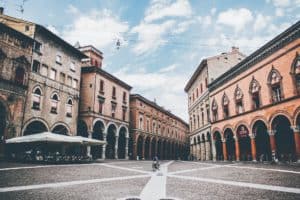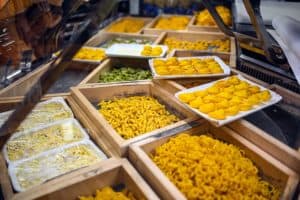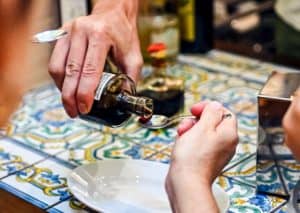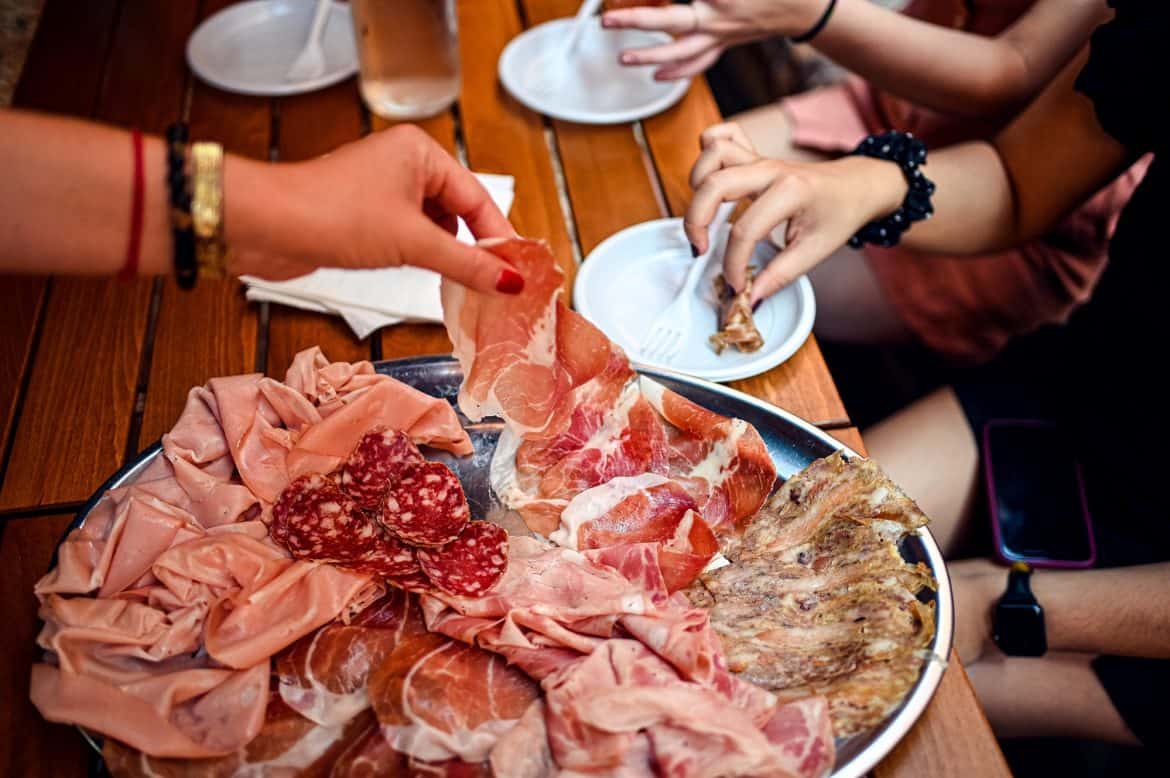If there’s a city in Italy — or dare we say, the world — that deserves its culinary crown, it’s Bologna. Situated in the heart of the Emilia-Romagna region, Bologna has been setting the global standard for what authentic Italian food should look, smell, and taste like. And it’s not just the food; it’s the experience, the heritage, and the warm embrace of tradition that turn every meal here into a ritual of joy and discovery.

But what is it that makes the cuisine of Bologna so remarkable? Is it the centuries-old culinary traditions passed down through generations? The locally-sourced ingredients that defy industrialization? Or is it the people — the small-scale farmers, the dedicated artisans, and the spirited chefs — whose collective culinary wisdom and passion come together to create a unique gastronomic culture?
The answer, as you’ll find on our Bologna Food Tour, is a harmonious mix of all these elements. Over the course of this tour, we’ll guide you beyond the usual tourist paths to small eateries, historic food markets, and age-old taverns where you’ll not only eat but also live the culinary traditions of this Italian jewel. From iconic Ragù alla Bolognese to the complex flavors of aged balsamic vinegar, we offer more than just a meal — we provide a deep dive into culture, and an experience that you will cherish long after your journey is over.

So, if you consider yourself a food enthusiast and are looking for an extraordinary culinary experience, put on your most comfortable shoes. The streets of Bologna are calling, not just to be walked, but to be tasted, smelled, and savored.
Why Bologna is Italy’s Food Capital
Bologna, the capital of the Emilia-Romagna region, holds a special place in the hearts of food enthusiasts worldwide. Its reputation as Italy’s food capital is no fluke, but rather the result of a confluence of historical, geographical, and cultural factors that have combined to create a unique culinary culture.
Bologna’s historical roots as a significant medieval urban center and trading outpost contributed to the shaping of its cuisine. The city has long been a crossroads of various culinary customs and techniques, which has enriched its own unique set of recipes and food preparation methods. These centuries-old traditions continue to be celebrated, marking Bologna as a culinary beacon.
Moreover, the University of Bologna, founded in 1088, is the oldest university in the Western world. Its presence has always drawn students, scholars, and intellectuals from all over the globe, adding to the city’s cosmopolitan character. This influx of diverse populations inevitably influenced the local food culture, leading to the evolution of dishes that incorporate elements from various cuisines while still remaining authentically Bolognese.
The climate and geography of the region also play a significant role in its excellence. Emilia-Romagna is blessed with fertile soil, a favorable climate, and a landscape that supports the cultivation of a wide range of produce. From the Parmigiano Reggiano cheese produced in the region’s dairy farms to the grapes that go into making its famous balsamic vinegar, the quality of the ingredients is unparalleled.
This combination of historical influences, a diverse and inclusive culture, and a commitment to using only the finest local ingredients has solidified Bologna’s position as Italy’s food capital. Over the years, this rich culinary heritage has been lovingly preserved by the city’s chefs, food artisans, and home cooks, all of whom contribute to the gastronomic narrative that makes Bologna such a unique and compelling destination for food lovers.
Home of the World-Famous Bolognese Sauce
This signature sauce from is one of the stops from our Bologna Food Tour and has captured global attention, yet its origins are deeply rooted in the city’s culinary traditions. The authentic version is a labor of love, requiring a meticulous blend of minced beef and pork, finely chopped soffritto (onions, celery, and carrots), white wine, a touch of tomato paste, and milk. The ingredients simmer together over low heat for hours, resulting in a thick, creamy concoction that perfectly complements the broad strands of tagliatelle, the pasta it traditionally accompanies.
The Bolognese sauce we recognize today began appearing in cookbooks in the late 19th century, but its lineage is a subject of culinary debate. Some historians trace its roots to French Ragout, acknowledging the centuries of French influence in the region. Others argue that it’s an evolution of older Italian meat sauces, refined to perfection in Emilia-Romagna kitchens. Regardless of its exact origin, the Italian Academy of Cuisine took the significant step in 1982 of registering an “official” recipe with the Bologna Chamber of Commerce, reinforcing its importance as a cultural and culinary landmark.
In Bologna, Ragù alla Bolognese holds an almost civic status, symbolizing the community’s commitment to quality, tradition, and gastronomic excellence. Whether served in a high-end restaurant or a local home, the sauce mirrors Bolognese values and contributes to the city’s reputation as a food capital. Each time you savor a dish featuring this iconic sauce, you’re connecting with a culinary heritage that has both shaped and transcended regional identity, making it a true emblem of Bolognese culture.
Visiting Bologna? Here’s a Guide to the Dishes You Can’t Miss
The Bologna Food Tour offers a carefully curated itinerary stitched together by local food experts. The stops are not random choices but thoughtfully selected venues that allow you to dig deep into the regional culinary ethos. In addition to the expected Ragù alla Bolognese, let’s explore some of these not-to-be-missed experiences.
– Sampling Local Charcuterie at Bologna’s Oldest Salumeria
The city’s meat-cutting tradition is among Italy’s finest, and there’s no better place to confirm this than at one of its time-honored Salumerias. Expect to be greeted with slivers of Prosciutto di Parma, slices of Salame Rosa, and generous servings of Mortadella. These aren’t just any cold cuts; they’re a part of Bologna’s edible heritage.
– A Glimpse and Taste of Fresh, Handmade Pasta
Bologna takes its pasta seriously. You’ll not just taste but also see pasta being handcrafted by skilled sfogline (pasta-makers). Here, pasta isn’t just food; it’s an artisan craft, whether it’s tagliatelle, tortellini, or other regional pasta varieties. Each bite will make you appreciate the labor and love that go into making these simple yet exquisite dishes.
– The Essence of Aged Balsamic Vinegar from Modena
Balsamic vinegar is a work of culinary art. During your tour, you’ll get to compare the nuanced flavors of 8, 12, and 25-year-old balsamic vinegars. Each taste reveals more complexity, more depth, and a harmonious balance of sweetness and acidity that can only be achieved through years of careful aging.
– Local Wine from Bologna’s Most Historic Tavern
No food tour in Bologna would be complete without wine; it’s an essential companion to any Italian meal. The taverns of Bologna have been serving local wines for centuries, connecting the modern visitor to the city’s age-old culinary traditions. You’ll sip the finest regional wines in an ambiance steeped in history.
Enhancing the Experience: The Upgraded Drinks Package
The standard tour already includes quality beverages that complement the food, but for those interested in enriching their tasting experience, an Upgraded Drinks Package is available.
The first specialty in this package is an “ammazzacaffé,” literally meaning “coffee killer” in Italian. This drink is traditionally consumed after coffee to neutralize its strong flavors and prepare your palate for what’s next.
The second offering is Nocino, also consumed primarily as a digestif. A walnut-based liqueur typically homemade and follows traditional recipes passed down through generations. The walnuts are infused in pure alcohol along with a mix of spices like cinnamon and cloves, and then sweetened. After months of aging, the liqueur develops its complex, earthy, and slightly bitter flavor, with sweet and spicy undertones., Nocino isn’t merely an end-of-meal ritual; it’s a flavorful voyage into Bologna’s history and community bonds.

So, why should you carve out valuable time on your Italian itinerary for the Bologna Food Tour? The answer is simple: it goes beyond the superficial to offer an authentic and diverse gastronomic adventure, revealing the rich Bologna culture without falling back on overused tropes.
Each handpicked stop reveals another layer of Bologna’s culinary history and innovation. From the time-honored Salumeria, to the mastery of handmade pasta, the tour reminds us why Bologna sits comfortably atop the Italian food hierarchy.
In a world where culinary tourism often leans into gimmickry, this food tour prioritizes authenticity. It provides not only flavors but also the stories and people behind them, making it not just another food tour but an authentic cultural experience. So, don’t just settle for checking off tourist hotspots. Participate in a journey that honors the complexities, history, and deep-seated traditions of Bologna’s cuisine. Because ultimately, that’s what makes this tour worth every minute and every euro spent.

